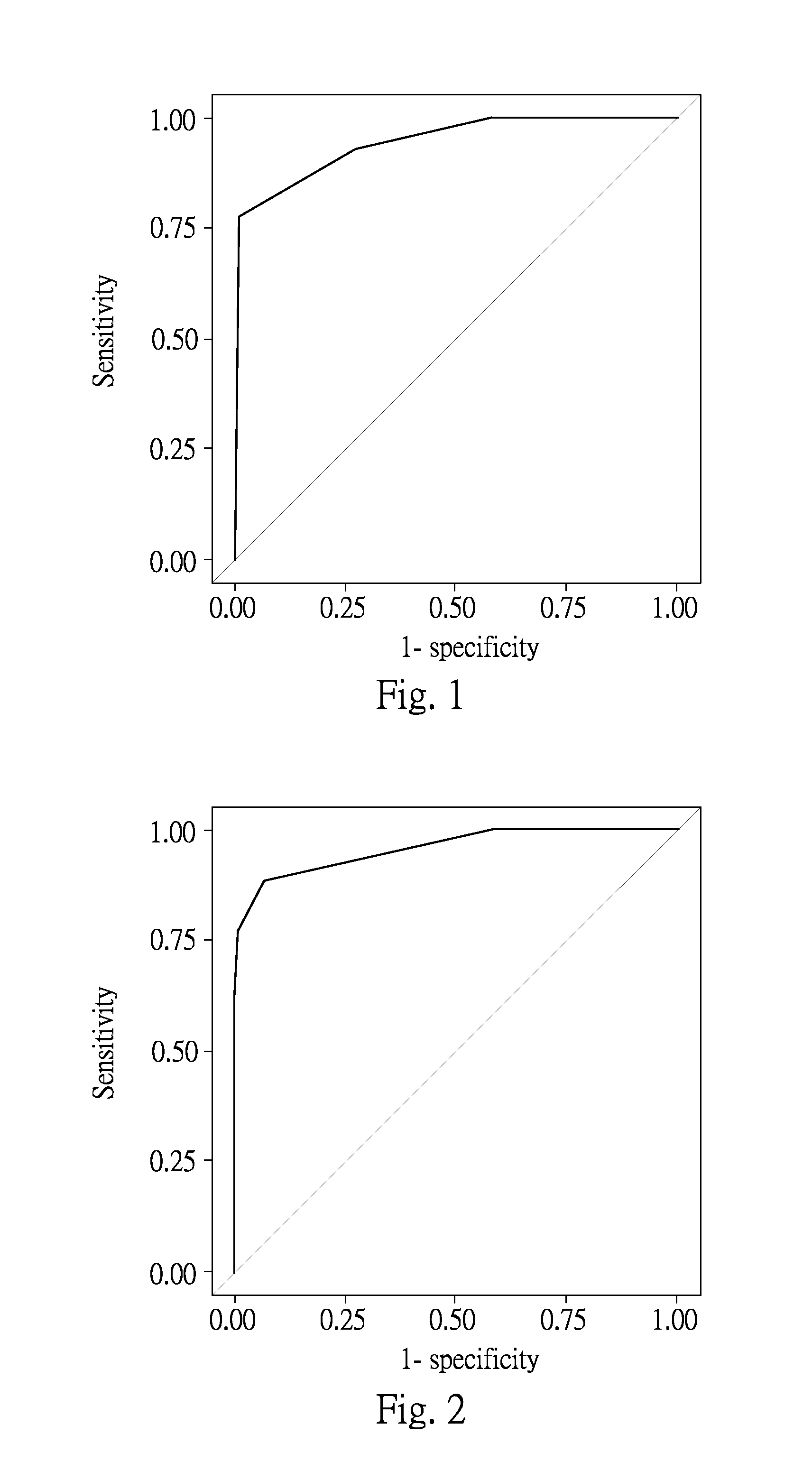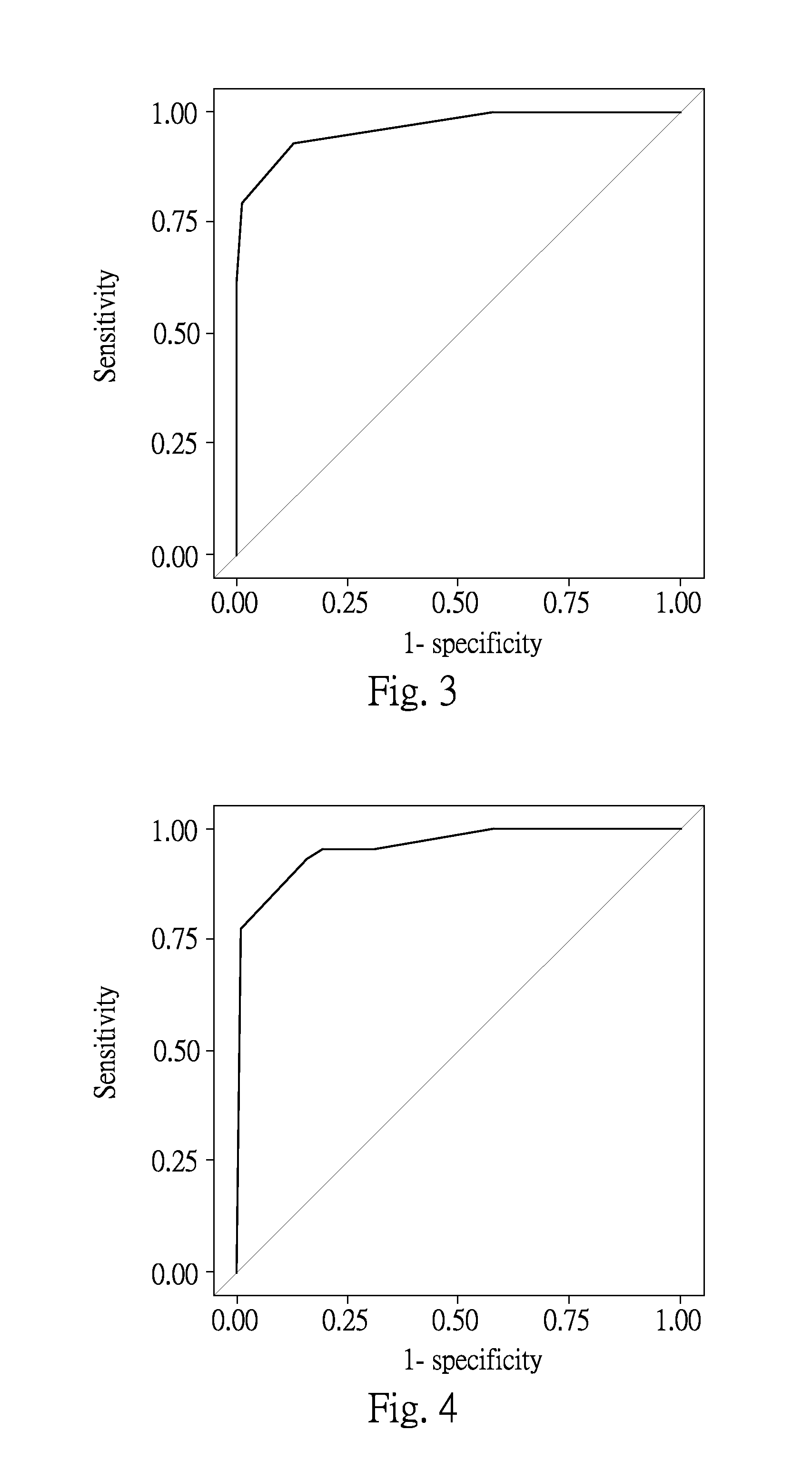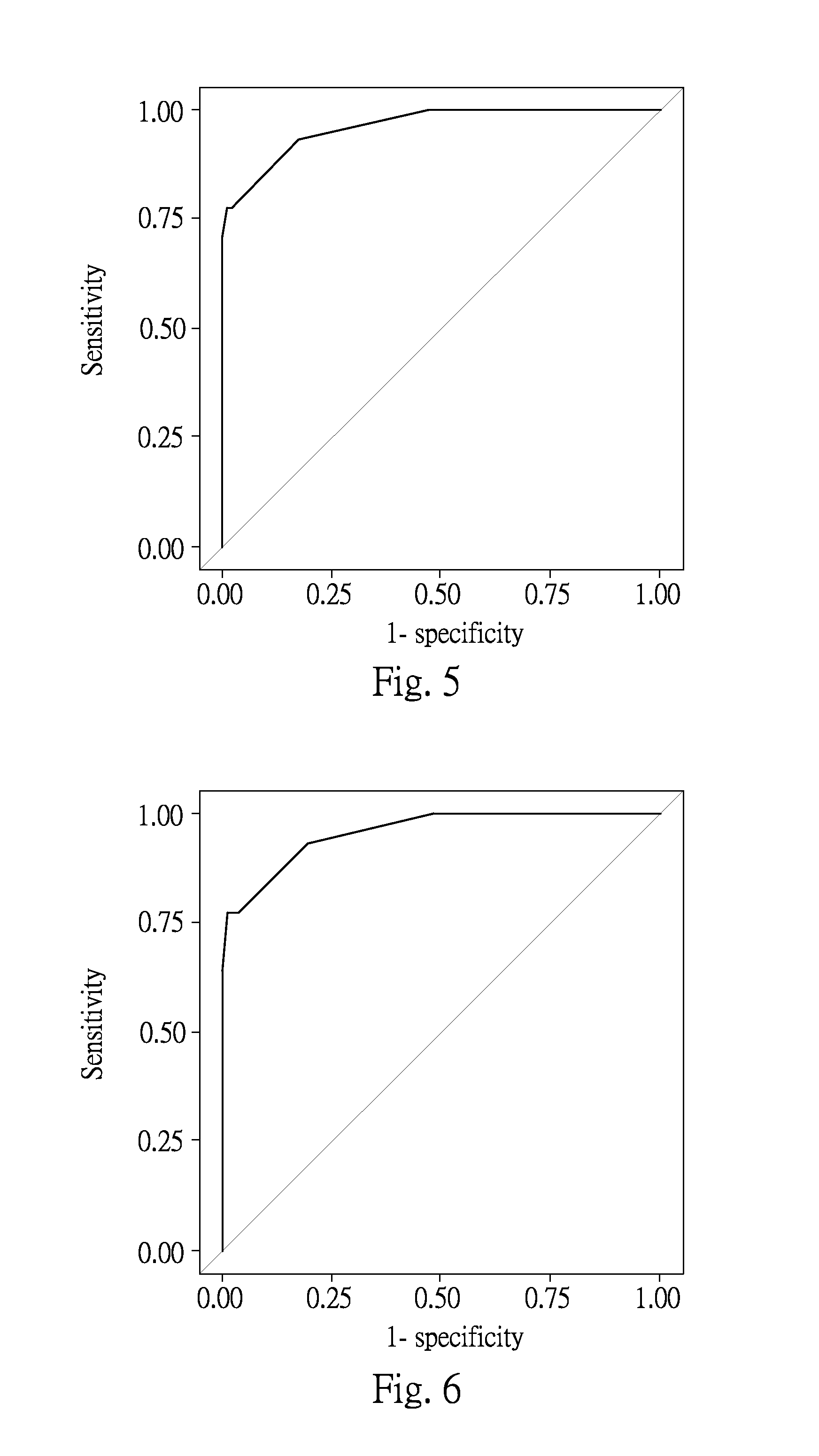Biomarker(s) for early detection / diagnosis/ prognosis of gastric cancer
a gastric cancer and biomarker technology, applied in the field of gastric cancer detection/diagnosis/prognosis, can solve the problems of disfunction of the regional mucosa layer, affecting the survival rate of patients, and reducing the 5-year survival rate after surgery, so as to improve the survival rate, improve the prognosis, and reduce the expression value of crip2 or rpl15.
- Summary
- Abstract
- Description
- Claims
- Application Information
AI Technical Summary
Benefits of technology
Problems solved by technology
Method used
Image
Examples
example 1
Examination of the Expression Values of the Nine Biomarkers in Each Sample
[0085]The total RNA was extracted from the sample collection treated with TRIzol® reagent (Invitrogen, Carlsbad, Calif., USA) for the quantitative RT-PCR (qRT-PCR) to characterize the expression values of the nine biomarkers for gastric cancer. In the reverse transcription, the extracted total RNA reverse transcribed to cDNA with Advantage RT-for-PCR kit (Clontech, USA).
[0086]After synthesizing first strand of cDNA, the expression values of the biomarkers were determined by quantitative real time PCR with FastStart Universal Probe Master Rox reagent (Roche). The reverse primers and Universal ProbeLibrary probes were chosen as suggested by Roche Universal Probe library. Finally, the expression values of the biomarkers were measured using the ABI StepOnePlus Real-Time PCR System (Applied Biosystem). The sets of primers used for the quantified real time PCR are listed in table 2.
TABLE 2The primer sets of the biom...
example 2
Each Biomarker for Detection Gastric Cancer
[0088]The expression values of the nine biomarkers from the samples characterized by the quantitative real time PCR were further statistically analyzed by Mann-Whitney U test. The P value of the statistic data shown in table 3 was determined using Wilcoxon rank sum test.
TABLE 3Mann-Whitney U test results for each biomarkerGastric WilcoxonNormal cancer rank sum (n = 87)(n = 44)testP valueHIF1Amean ± SD0.80 ± 0.441.93 ± 1.29median0.771.664107.0FAM84Bmean ± SD0.17 ± 0.140.05 ± 0.06median0.130.031508.5CRIP2mean ± SD6.18 ± 3.962.10 ± 2.22median5.831.471549.0GSNmean ± SD1.83 ± 1.313.55 ± 2.29median1.573.113950.5RPL15mean ± SD3.21 ± 1.321.39 ± 0.84median3.191.181394.0DLG1mean ± SD1.33 ± 0.590.61 ± 0.39median1.260.561580.5MAT2Amean ± SD1.44 ± 0.600.67 ± 0.41median1.410.561530.0PGBD2mean ± SD3.76 ± 1.921.32 ± 0.77median3.561.171378.5ID3mean ± SD1.00 ± 0.590.28 ± 0.24median0.880.211253.0
[0089]In table 3, the p value of each biomarker less than 0.005 ...
example 3
HIF1A and PGBD2 for Diagnosis Gastric Cancer
[0095]Obtaining the expression values of HIF1A and PGBD2 in each sample, all the collected data of HIF1A and PGBD2 were further analyzed by logistic regression analysis in SAS software as shown in table 6 and FIG. 1, wherein FIG. 1 is a ROC curve for predictive profile of detecting gastric cancer using HIF1A and PGBD2.
TABLE 6The multivariate logistic regression result for HIF1A and PGBD2β-Odds 95% confidence intervalestimateratioLower boundUpper boundP valueIntercept−1.19590.0055HIF1A>0.934.7577116.47713.594997.990PGBD2>2.34−5.77160.0030.031
[0096]The table 6 and FIG. 1 shows the predicted risk of gastric cancer in the examined patients according to the combinational biomarkers including HAF1A and PGBD2. According to table 6, it is known that a sample provider with HIF1A expression value higher than 0.93 shows 116.477 folds of risk of acquiring gastric cancer of with comparison of a sample provider with HIF1A expression value equal or less ...
PUM
| Property | Measurement | Unit |
|---|---|---|
| physical examination | aaaaa | aaaaa |
| CT | aaaaa | aaaaa |
| MRI | aaaaa | aaaaa |
Abstract
Description
Claims
Application Information
 Login to View More
Login to View More - R&D
- Intellectual Property
- Life Sciences
- Materials
- Tech Scout
- Unparalleled Data Quality
- Higher Quality Content
- 60% Fewer Hallucinations
Browse by: Latest US Patents, China's latest patents, Technical Efficacy Thesaurus, Application Domain, Technology Topic, Popular Technical Reports.
© 2025 PatSnap. All rights reserved.Legal|Privacy policy|Modern Slavery Act Transparency Statement|Sitemap|About US| Contact US: help@patsnap.com



